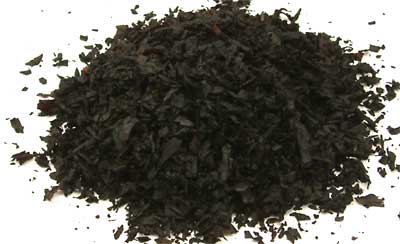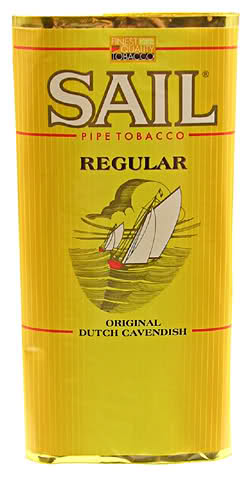I still can remember the first time I bought tinned pipe-tobacco about 3½ years ago. I checked the tin for the expiration date and could not find it to my surprise. My (twisted) mind went like: Tobacco is a leaf, leaves are like vegetables and they can’t be kept good for a long period (I still remember the withered cauliflower in my fridge started quoting Shakespeare..). So where was the damn date?? At that time I did not know that it is with most tobaccos like it is with most wines, the older the better. My eyes were opened by a story from GL Pease in which he tells that the owner of a store he used to work (Drucquer & Sons) used to age certain blends and sell them later at a higher price. At that time I also became active at some international fora and saw that especially in The States it is quit common to stock up on blends you like. Being a cheap Dutchman, this made me think. Every year the prices of tobacco go up here because of the bloody taxes. So to be able to smoke tobaccos at yesterdays prices and have the benefits from ageing… *big grin*
 But first of all, very important, it is no guarantee that ageing a tobacco will make it better. A shitty blend will never become ambrosia for your taste buds. It is not a certainty that a tobacco which should age well will actually do so. Having said that, what actually happens when you age a blend? Time makes sure the various components of the mixture will marry, blend together into a more consistent whole. Also lot of tobacco species contain sugars which are needed for fermentation. That process transforms, changes the leaves used. It provides a less sharp, mellower but richer and more complex taste. So the more sugar in a tobacco leaf, the better it will ferment and the richer it will taste after ageing.
But first of all, very important, it is no guarantee that ageing a tobacco will make it better. A shitty blend will never become ambrosia for your taste buds. It is not a certainty that a tobacco which should age well will actually do so. Having said that, what actually happens when you age a blend? Time makes sure the various components of the mixture will marry, blend together into a more consistent whole. Also lot of tobacco species contain sugars which are needed for fermentation. That process transforms, changes the leaves used. It provides a less sharp, mellower but richer and more complex taste. So the more sugar in a tobacco leaf, the better it will ferment and the richer it will taste after ageing.
 There are 2 types of fermentation: aerobic and anaerobic. Aerobic fermentation happens in the American-style pull-lid tins (which contain more free oxygen) and in mason jars with bulk blends. Anaerobic fermentation is what occurs in the European-type vacuum sealed tins. Because there is more air in the American style tins the ageing dynamics are different. It is not so much that they age faster than the European-style tins than that it is just a matter of.. Difference. Experienced cellarers: please let me know that precise difference! Thanks! And when an old tin is opened of course new changes will begin to take place just like a wine is “breathing”.
There are 2 types of fermentation: aerobic and anaerobic. Aerobic fermentation happens in the American-style pull-lid tins (which contain more free oxygen) and in mason jars with bulk blends. Anaerobic fermentation is what occurs in the European-type vacuum sealed tins. Because there is more air in the American style tins the ageing dynamics are different. It is not so much that they age faster than the European-style tins than that it is just a matter of.. Difference. Experienced cellarers: please let me know that precise difference! Thanks! And when an old tin is opened of course new changes will begin to take place just like a wine is “breathing”.
Let’s take a look at the different species of tobacco and how they react to ageing:
 Virginia: Ages the best of all the tobaccos because of their high sugar content. If you have a blend with a lot of Virginias in it you have a good chance it will become more yummie with time. Within half a year you should notices the first changes and within 1 to 5 years it should really begin to shine. After those first years the speed of change will become slower, more gradual, but the blend will continue to improve. How long? I guess it will take 30 to 40 years before the mixture will go over the top and a certain descent might begin. But even then the smoke can be absolutely sublime.
Virginia: Ages the best of all the tobaccos because of their high sugar content. If you have a blend with a lot of Virginias in it you have a good chance it will become more yummie with time. Within half a year you should notices the first changes and within 1 to 5 years it should really begin to shine. After those first years the speed of change will become slower, more gradual, but the blend will continue to improve. How long? I guess it will take 30 to 40 years before the mixture will go over the top and a certain descent might begin. But even then the smoke can be absolutely sublime.
 Oriental: A high sugar level (just below Virginias) is also present in oriental tobaccos. Because of this they also age very well with the same ageing-expectancy as Virginias.
Oriental: A high sugar level (just below Virginias) is also present in oriental tobaccos. Because of this they also age very well with the same ageing-expectancy as Virginias.
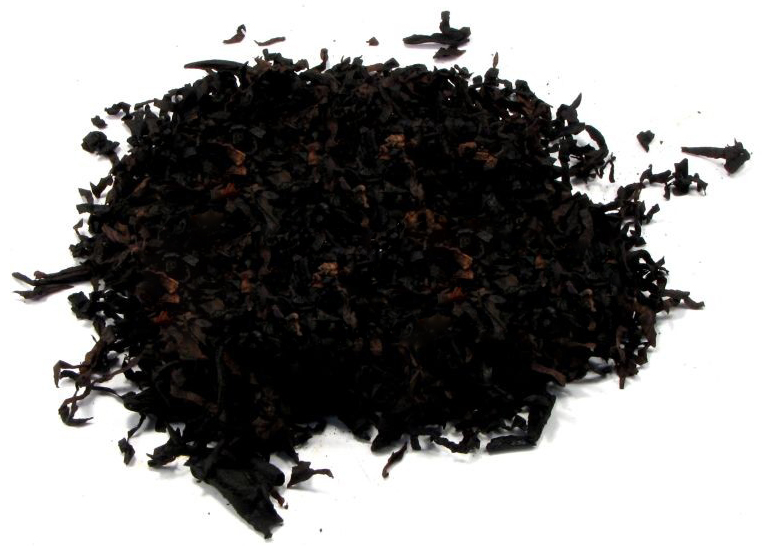 Latakia: Mixtures with latakia reach their summit in about 5 years and then begin to decline more rapidly. Latakia does not really age but gets softer, loses its edge with time. So if a blend depends on the smoky, leathery and spicy taste of latakia you should not stash away the tin for too long. But if there is good layering of other tobaccos underneath the dark leaf (hello Virginia and orientals) the blend still can deliver a fantastic smoke. Even though it will transform into something more harmonious, something less pungent. The old Balkan Sobranie Smoking Mixture is a good example of this. It still tastes wonderful despite some pipe-smokers prefer the newer version because of the fresher latakia.
Latakia: Mixtures with latakia reach their summit in about 5 years and then begin to decline more rapidly. Latakia does not really age but gets softer, loses its edge with time. So if a blend depends on the smoky, leathery and spicy taste of latakia you should not stash away the tin for too long. But if there is good layering of other tobaccos underneath the dark leaf (hello Virginia and orientals) the blend still can deliver a fantastic smoke. Even though it will transform into something more harmonious, something less pungent. The old Balkan Sobranie Smoking Mixture is a good example of this. It still tastes wonderful despite some pipe-smokers prefer the newer version because of the fresher latakia.
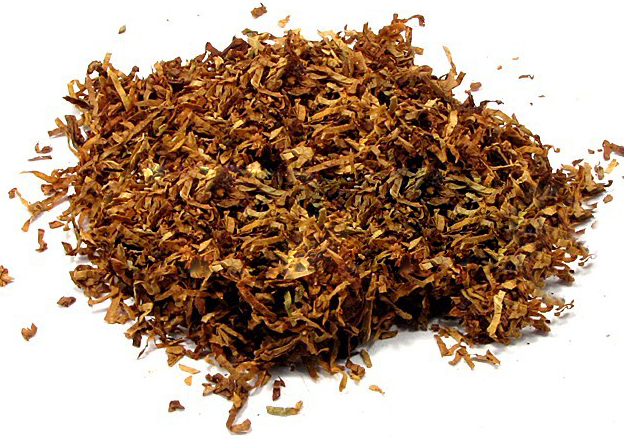 Burley: This leaf is low in sugar so there is not much fermentation going on. Just as with latakia it will become more smooth and blend in with the other tobaccos like sweet Virginias who get better with time as I told above. The delicious Estoterica Stonehaven is a prime example of this and will age very, very well.
Burley: This leaf is low in sugar so there is not much fermentation going on. Just as with latakia it will become more smooth and blend in with the other tobaccos like sweet Virginias who get better with time as I told above. The delicious Estoterica Stonehaven is a prime example of this and will age very, very well.
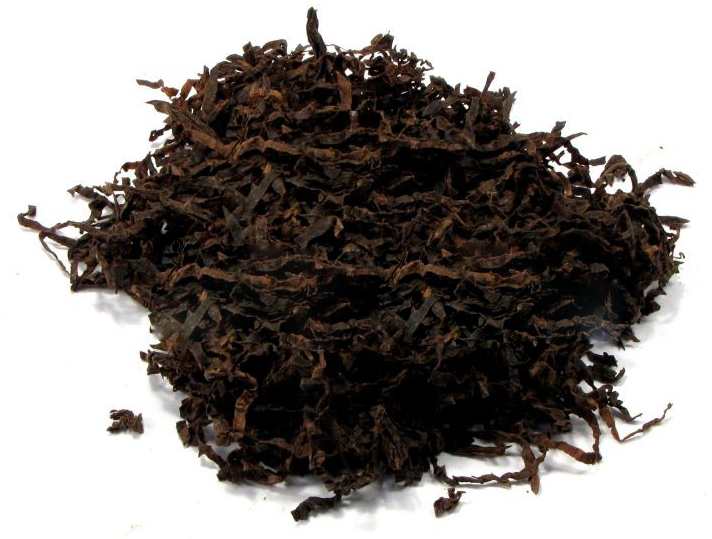 Perique: Because of the pressure-fermentation process with making the peppery leaf it will not change much over the years. But as with burley the combination with Virginia is a golden one. The thought alone of well-aged Escudo makes my mouth water.
Perique: Because of the pressure-fermentation process with making the peppery leaf it will not change much over the years. But as with burley the combination with Virginia is a golden one. The thought alone of well-aged Escudo makes my mouth water.
 Cavendish: In a way the same goes for cavendish as for perique. Because of the double fermentation process it will not really age.
Cavendish: In a way the same goes for cavendish as for perique. Because of the double fermentation process it will not really age.
 Aromatic tobaccos: Sweetened aromatics do not seem to age well. These tobaccos often have quite a bit of Propylene Glycol in them which serves as a humectant and carrier of aromatic flavours. So over a long time frame, they are pretty stable. The biggest change is that the aromatic components and characteristics can degrade or change over time. So what you find in a tin 5 years from now may not be as pleasing as it is today.
Aromatic tobaccos: Sweetened aromatics do not seem to age well. These tobaccos often have quite a bit of Propylene Glycol in them which serves as a humectant and carrier of aromatic flavours. So over a long time frame, they are pretty stable. The biggest change is that the aromatic components and characteristics can degrade or change over time. So what you find in a tin 5 years from now may not be as pleasing as it is today.
Here are some tips and facts about ageing and cellaring your precious tobaccos:
 – Preferably tobacco should be left in the original sealed tin. So check it out before storing to make sure it is not damaged. Look for damage to the tin, bumps, pin holes etc. Just make sure the vacuum seal is good. Then you can store it in a cool, dark place without a lot of fluctuations in temperature. An ideal temperature would be in the range of 15-21°C. So DON’T put tobacco in the refrigerator or freezer! That may cause damage to the cell structure of the tobacco. Also pay attention to the humidity, even though the tobacco is in airtight tins. High levels of humidity can cause corrosion and/or rust to the tin-metals and could compromise the seal. You also do not want to store your tobacco where it is exposed to light for long periods of time. Besides the light itself it often means heat, which can cause all kinds of unwanted chemical processes in tobacco. So do not try to speed up the ageing process by heating up your tins or loose tobacco.
– Preferably tobacco should be left in the original sealed tin. So check it out before storing to make sure it is not damaged. Look for damage to the tin, bumps, pin holes etc. Just make sure the vacuum seal is good. Then you can store it in a cool, dark place without a lot of fluctuations in temperature. An ideal temperature would be in the range of 15-21°C. So DON’T put tobacco in the refrigerator or freezer! That may cause damage to the cell structure of the tobacco. Also pay attention to the humidity, even though the tobacco is in airtight tins. High levels of humidity can cause corrosion and/or rust to the tin-metals and could compromise the seal. You also do not want to store your tobacco where it is exposed to light for long periods of time. Besides the light itself it often means heat, which can cause all kinds of unwanted chemical processes in tobacco. So do not try to speed up the ageing process by heating up your tins or loose tobacco.
 – I would recommend mason jars for the storage of bulk, loose and opened tins of tobacco. I prefer glass because it is a non-porous material and can be disinfected very easily. Airtight plastic containers are also ok but I still prefer glass. I just don’t feel ok with plastic. It’s a personal thing. If I do use plastic I make damn sure that it is brand new and that the tobacco is the first thing to hit the virginal bottom ever. The good thing is, mason, ball and bail top jars are pretty inexpensive and can be bought almost anywhere. They also come in a variety of sizes. That way you can use a small one to put some tobacco in that you regularly smoke and a large one for tobacco that you really want to age. Preparing the jars for storing/jarring/canning/whatever is one of the most important steps in the process of storing. Make sure that you sterilize the jars before you use them. I wash the mason, ball and bail top jars (including the rubber rings) with boiling water. I never use soap or something like that because I am afraid there will be a residue somewhere and my tobacco starts to smell like Lakeland-style blends. Then I dry the jars and rings with clean paper towels and the tobacco can be put inside. It is advisable to label each jar with the contents and put a date on them before storage. Some people prefer to place the filled jars in boiling water to heat them up and then place the lids on to create a vacuum seal. I have never done that and I have had no problems at all. My older jars have created their own vacuum while in storage. Just one more thing, the rubber rings will start to smell like the tobacco inside. So if you want to refill the jar with an aromatic after having smoked a for example latakia-heavy blend out of it, just make sure you replace the rubber ring. Nothing can get the smell out of it..
– I would recommend mason jars for the storage of bulk, loose and opened tins of tobacco. I prefer glass because it is a non-porous material and can be disinfected very easily. Airtight plastic containers are also ok but I still prefer glass. I just don’t feel ok with plastic. It’s a personal thing. If I do use plastic I make damn sure that it is brand new and that the tobacco is the first thing to hit the virginal bottom ever. The good thing is, mason, ball and bail top jars are pretty inexpensive and can be bought almost anywhere. They also come in a variety of sizes. That way you can use a small one to put some tobacco in that you regularly smoke and a large one for tobacco that you really want to age. Preparing the jars for storing/jarring/canning/whatever is one of the most important steps in the process of storing. Make sure that you sterilize the jars before you use them. I wash the mason, ball and bail top jars (including the rubber rings) with boiling water. I never use soap or something like that because I am afraid there will be a residue somewhere and my tobacco starts to smell like Lakeland-style blends. Then I dry the jars and rings with clean paper towels and the tobacco can be put inside. It is advisable to label each jar with the contents and put a date on them before storage. Some people prefer to place the filled jars in boiling water to heat them up and then place the lids on to create a vacuum seal. I have never done that and I have had no problems at all. My older jars have created their own vacuum while in storage. Just one more thing, the rubber rings will start to smell like the tobacco inside. So if you want to refill the jar with an aromatic after having smoked a for example latakia-heavy blend out of it, just make sure you replace the rubber ring. Nothing can get the smell out of it..
– Vacuum sealing is great for many things but is pretty useless for tobacco. Tobacco needs some air to maintain the ageing process. A perfectly vacuum sealed bag or container will probably keep the contents fresh, but it may not really age the way you expect it to. So.. Having said that I realize that vacuum sealing is ideal for aromatics! One tip from a Dutch forum member: do not vacuum loose tobacco in a seal-bag. It will destroy and break up the tobacco strands.. Preferably put the tobacco in an unused tin, put that in the bag and vacuum the hell, ehmm, air out of it.
– When you find a blend you like it is always a good idea to buy 1 tin to smoke now and 1 (or more) to cellar. That way your collection will keep growing with tobaccos you like and you have the benefits of ageing. A win-win situation.
 – Do not store pipe tobacco and cigars together. Cigars are like little sponges and they will eventually absorb any moisture, aromas, and flavours that are nearby. Having said that, do not store pipe tobacco in a (cigar) humidor. 1. The cedar in humidors absorbs moisture and it will suck all of the moisture from your tobacco like a vampire. 2. It will absorb the aroma of the tobacco blend. 3. The cedar could also add a cedar aroma and flavour to your tobacco.
– Do not store pipe tobacco and cigars together. Cigars are like little sponges and they will eventually absorb any moisture, aromas, and flavours that are nearby. Having said that, do not store pipe tobacco in a (cigar) humidor. 1. The cedar in humidors absorbs moisture and it will suck all of the moisture from your tobacco like a vampire. 2. It will absorb the aroma of the tobacco blend. 3. The cedar could also add a cedar aroma and flavour to your tobacco.
– Sometimes you can find so called “sugar crystals” on aged tobacco. Mr. Pease has done some rudimentary playing with them, though no full-scale analysis, and found them not sweet, not very soluble, and not very likely to be sugar. Probably they are organic acids that have surfaced as a result of pH or other changes in the chemistry of the leaf as it ages. But good new, the presence of these crystals usually indicates something good has happened to the tobacco that hosts them! PipesMagazine.com member cgrd took some neat pictures of the crystals on a flake of Stonehaven from under a microscope which you can see here.
– Mould is the enemy of (aged) tobacco. How do you know it is there? Well, if there is a spider-web like, hairy substance on your tobacco. Bad news… Your nose will offer the second clue. Tobacco with mould stinks in a way that is difficult to describe but once you have smelled it, you’ll never forget it. Imagine the aroma of the sweaty feet of your girlfriend combined with the scent of over-ripe French cheese..
 – Nicotine has nowhere to go and it does not seem to break down through ageing. But ageing can change the pH of the smoke which will change how readily the nicotine is absorbed. The more alkaline the smoke, the more nicotine you will get into your bloodstream. My personal experience is that older tobaccos are stronger. Or they just made them stronger in the ol’ days. When men were more manly!
– Nicotine has nowhere to go and it does not seem to break down through ageing. But ageing can change the pH of the smoke which will change how readily the nicotine is absorbed. The more alkaline the smoke, the more nicotine you will get into your bloodstream. My personal experience is that older tobaccos are stronger. Or they just made them stronger in the ol’ days. When men were more manly!
 – There is a free site where you can fill in all the data about your tobacco collection. This way you can show off to your friends what you precisely have: http://www.tobaccocellar.com/
– There is a free site where you can fill in all the data about your tobacco collection. This way you can show off to your friends what you precisely have: http://www.tobaccocellar.com/
In my Pleasures of life in Belgium 2014 blog-post I told you about my ± 90-year old knife-cutter tin of Capstan Medium Navy Flake that was opened by Martin. For more pictures see below. Astoundingly the condition of the tobacco inside the tin was perfect! Which is a testament to the quality of the old “knife lid” or “cutter top” tins. I had a few of those: a tin of Craven Mixture from the 1930’s, a St. Bruno Flake tin from the 1960’s and the Capstan Medium Navy Flake tin from the 1920’s. All of them were a bit corroded from the outside but clean as a whistle from the inside. Spotless!
Back home from the meeting I had the chance to properly gaze at the ancient Capstan. Unfortunately all the flakes were more or less stuck together because of the age so I had big difficulties keeping them whole. I am well acquainted with the current production and compared to that the old flakes were pretty dark and very thin. In fact I have never seen such thinly cut flakes, only Esoterica’s Stonehaven comes close. The smell from the tobacco was instantly recognizable. Typical (current day) Capstan, but somewhat diminished. I could smell more tobacco than topping/casing. And that was also the case with the taste when I lit up my pipe. The current production leans on the topping/casing while with the old version those flavours had degraded somewhat over the years. Instead the aged Virginia tobaccos had taken the reign and transformed the flakes into an exceptionally smooth mouth-watering whole. But in all honesty, I did like the contents of my 1989 Capstan tin better. That one had the best of both worlds: still intact topping/casing flavours and aged tobacco.
So buy those blends you love and start your own old treasure tobacco collection!








